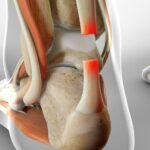When it comes to dentures, there are a lot of choices available in Massachusetts, and you cannot always choose the best one by just closing your eyes and pointing the finger at it. A lot of research and analysis goes into the selection of the perfect type of danger by taking a lot of factors into consideration.
When it comes to danger, there is a choice between immediate and conventional types of dentures, which play a very important role in both daily life and the recovery process. Immediate dentures are placed in your mouth directly after tooth extraction. Conventional dentures, on the other hand, are fitted after the gums have healed completely.
Understanding the difference between these two can help you make informed decisions that can suit your needs, comfort, and lifestyle. Consulting a cosmetic dentist in Andover, MA, is the first step towards making a right and informed decision.
Immediate Dentures: Instant Solution, Unique Challenges
-
Immediate Aesthetic Benefits
One of the biggest advantages of immediate dentures is that they are placed immediately after teeth removal, so patients aren’t left without teeth during the healing phase. This helps maintain facial structure, smile, and confidence right from the start, making the transition smoother for those concerned with appearance.
-
Adjusting to Fit Changes Due to Healing
With immediate dentures, gums, and jawbones are still healing and adjusting after extractions. This can lead to changes in fit over time, often requiring frequent adjustments or relining to maintain comfort. Patients must be prepared for these adjustments and understand that it may take a few appointments to achieve the optimal fit.
-
Increased Comfort Challenges During Healing
Since immediate dentures are fitted to a still-sensitive and healing mouth, some patients may experience initial discomfort. Soreness and pressure points are common as the mouth gets used to the new appliance. Over-the-counter pain relievers and guidance from the dentist can help manage this adjustment period, but a certain level of patience is necessary.
-
Shorter Recovery Times for Basic Functionality
Immediate dentures allow patients to begin eating and speaking shortly after tooth removal, though soft foods are recommended in the beginning. This shortens the recovery timeline for basic functionality, giving patients an easier transition to using their new dentures.
Conventional Dentures: Custom Fit, Longer Waiting Period
-
Optimized Fit and Long-Term Comfort
Conventional dentures are designed and fitted after the gums have fully healed, which usually takes four to six weeks after extraction. This allows the dentist to create a more precise fit based on the healed shape of the gums and jaw. The result is often a more comfortable fit with fewer adjustments needed over time, leading to a stable and secure feel during daily use.
-
Extended Initial Adjustment Period
Since conventional dentures require a waiting period, patients must go without teeth for several weeks, which may impact self-confidence, eating, and speaking. Many people find this period challenging but consider it worth the improved fit and comfort they’ll experience in the long term. However, some people may prefer temporary solutions, like partial dentures or immediate dentures, to bridge this gap.
-
Reduced Need for Adjustments and Relines
Because the gums are fully healed before conventional dentures are fitted, they are less likely to change in fit over time. Patients may still need occasional adjustments, but these are typically less frequent than with immediate dentures, as the gums are no longer shrinking or shifting as they heal.
-
Enhanced Speech and Eating Experiences
Conventional dentures, due to their customized fit, often provide a more natural experience when eating and speaking. With fewer adjustments needed over time, users can achieve a more predictable and consistent experience. This stability can help patients feel more comfortable in social settings, reducing concerns about denture movement.











